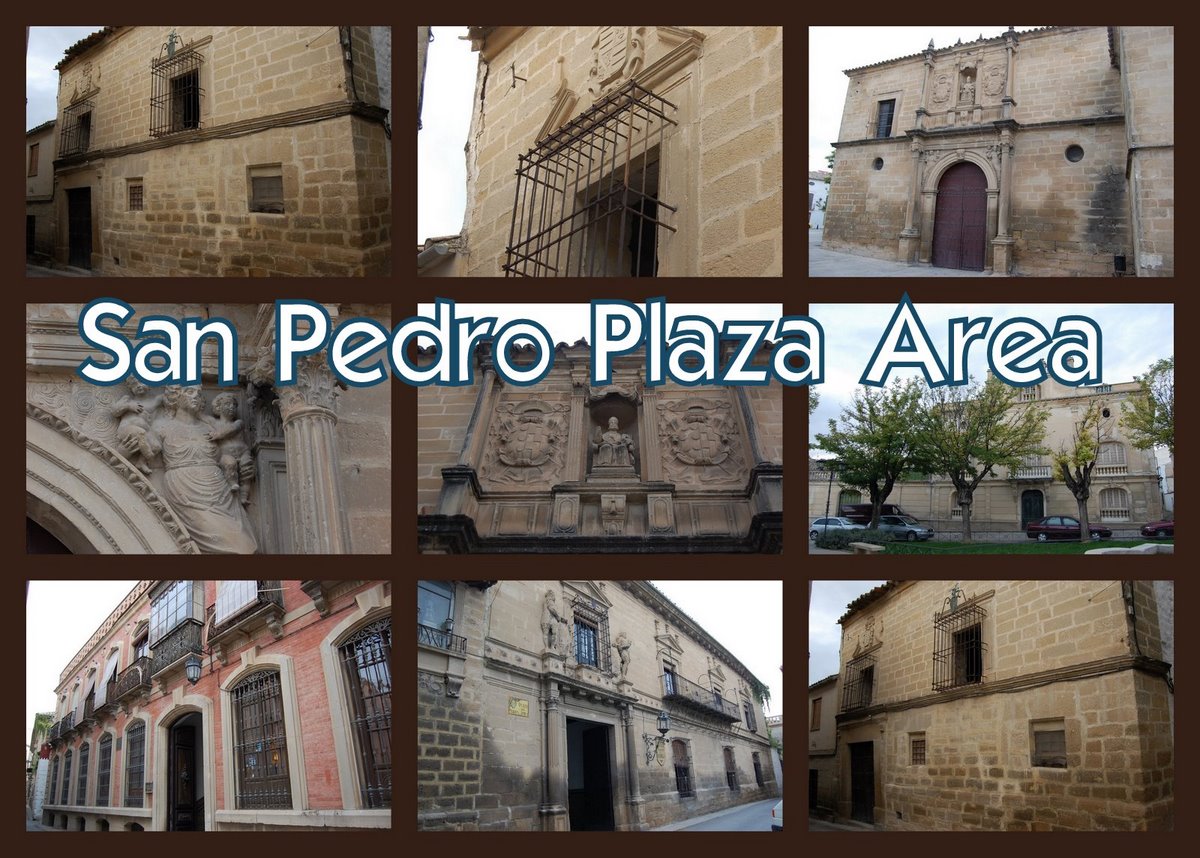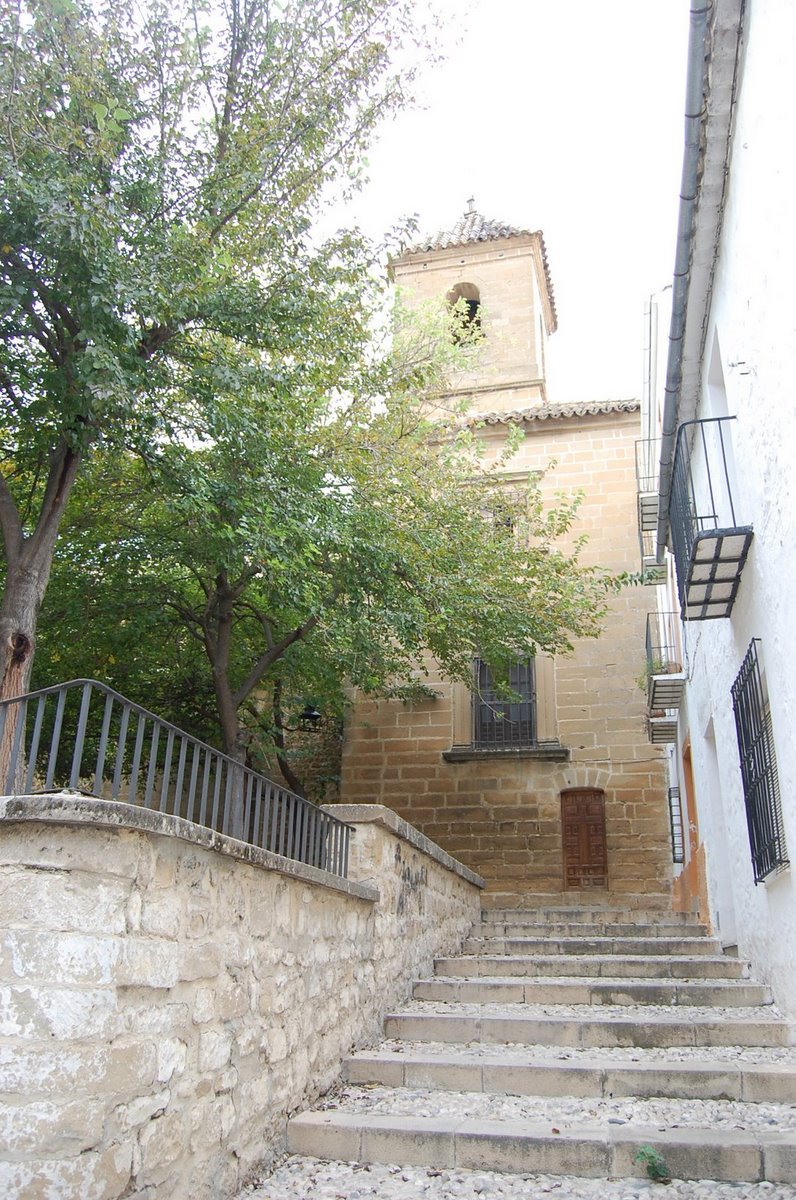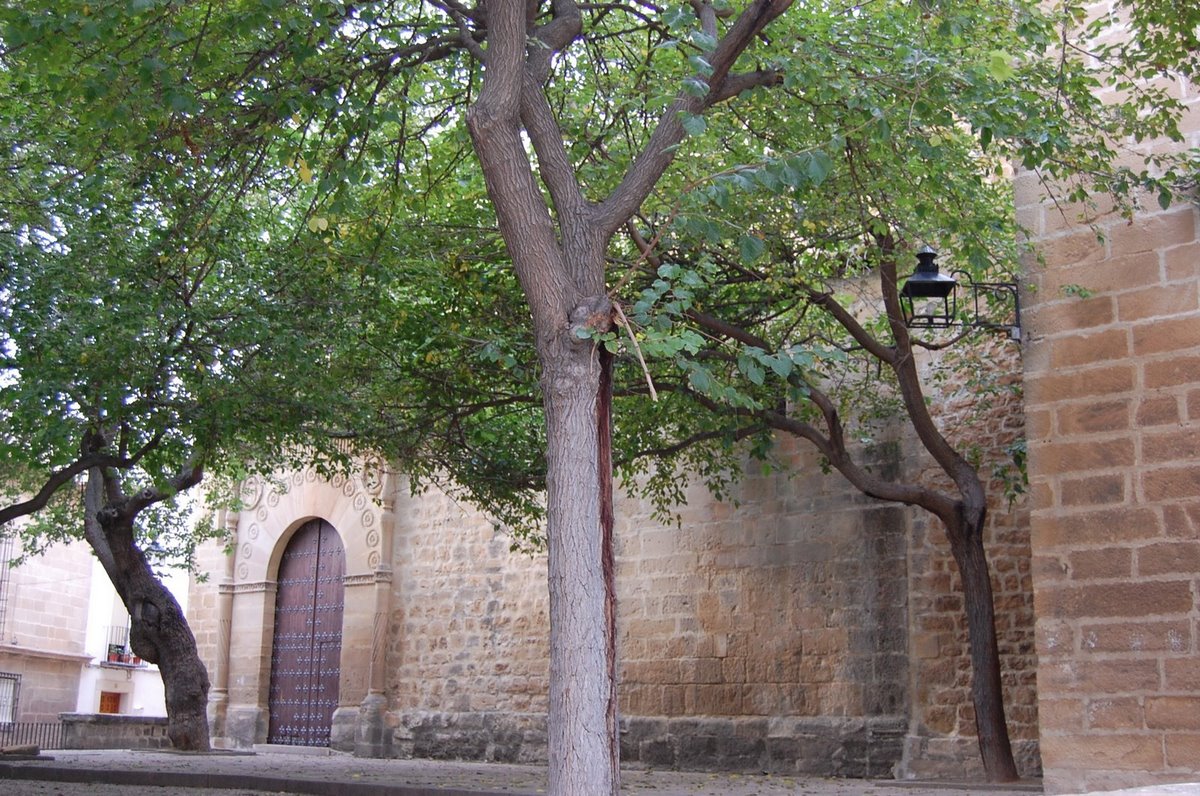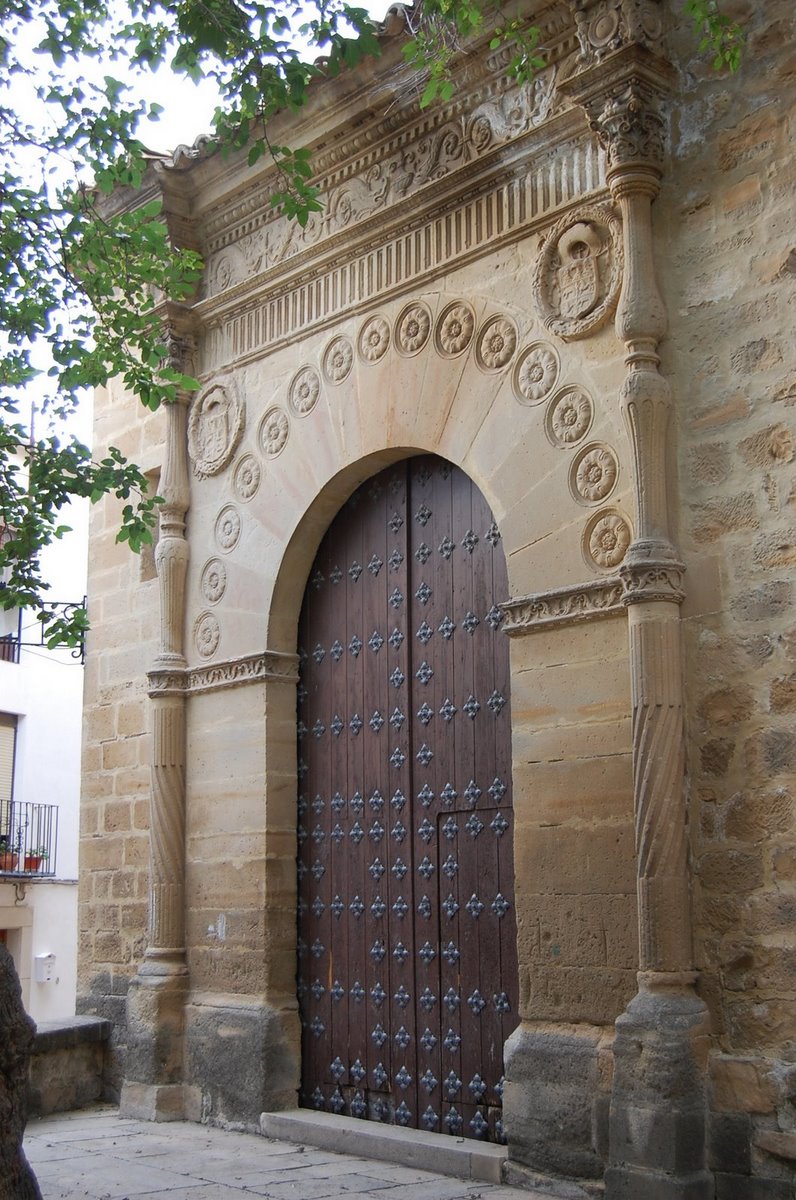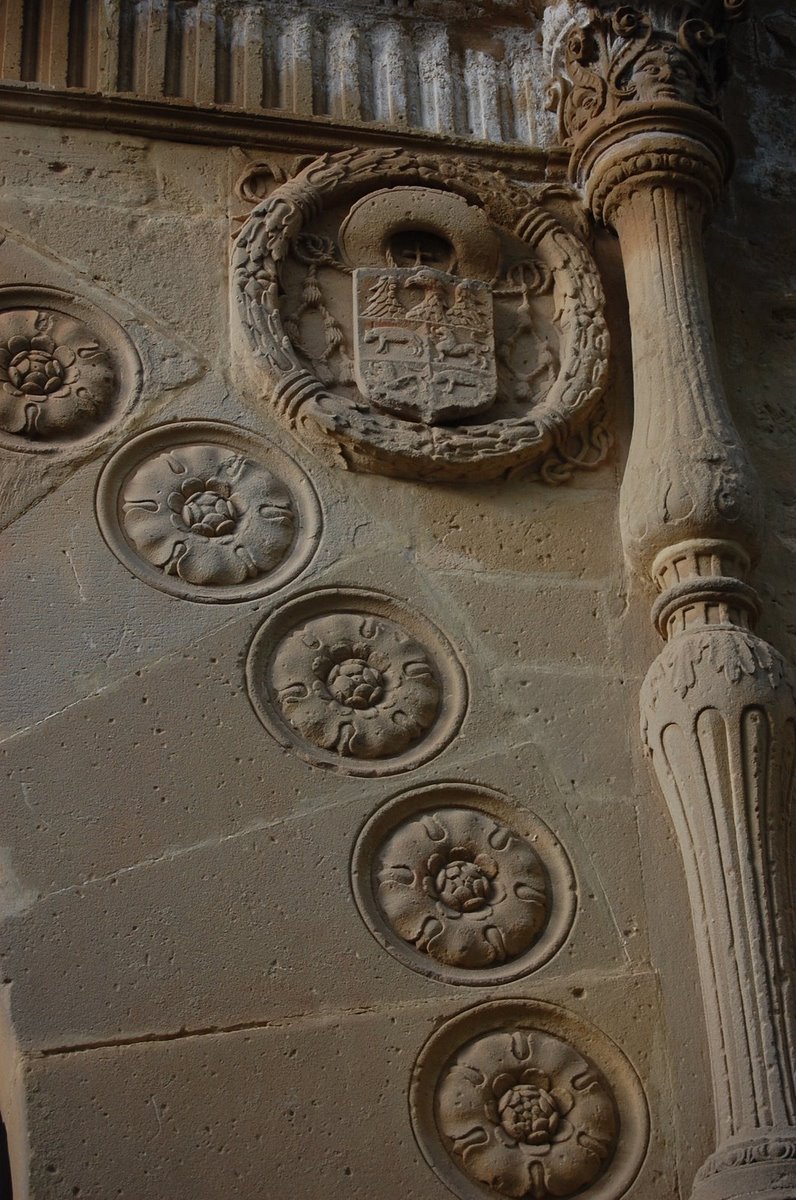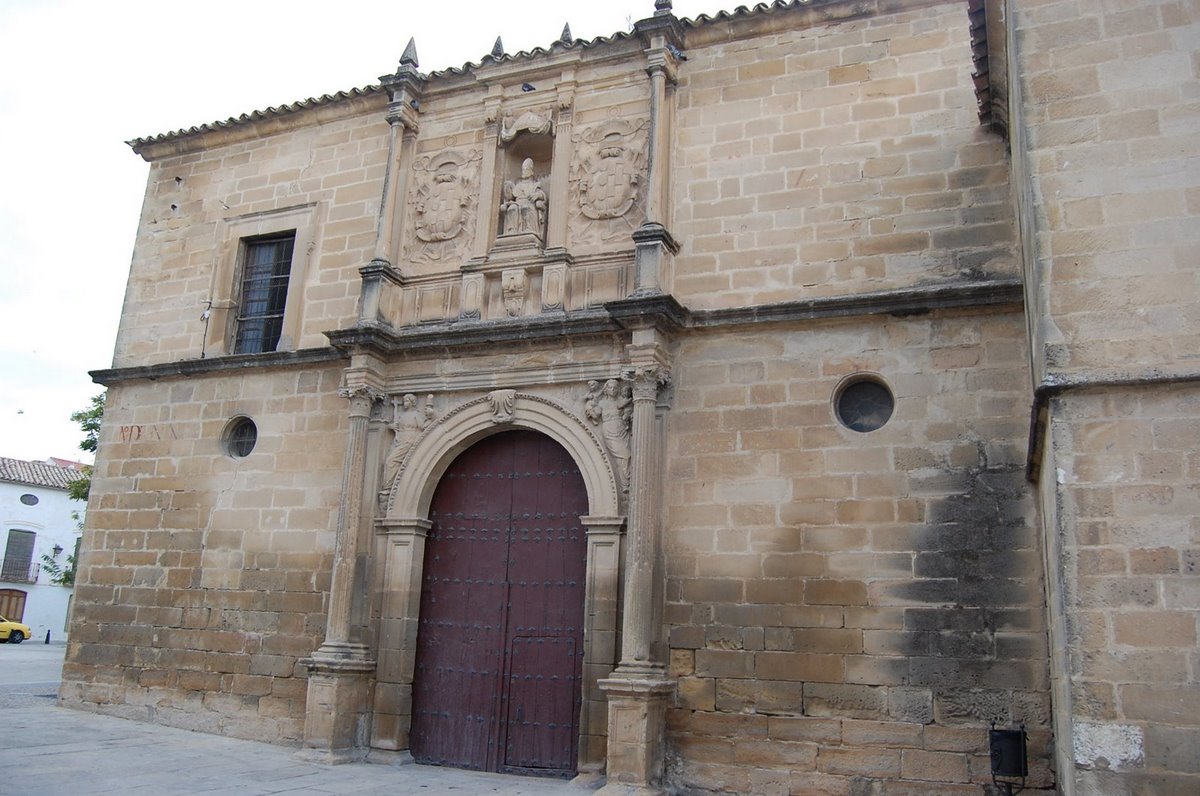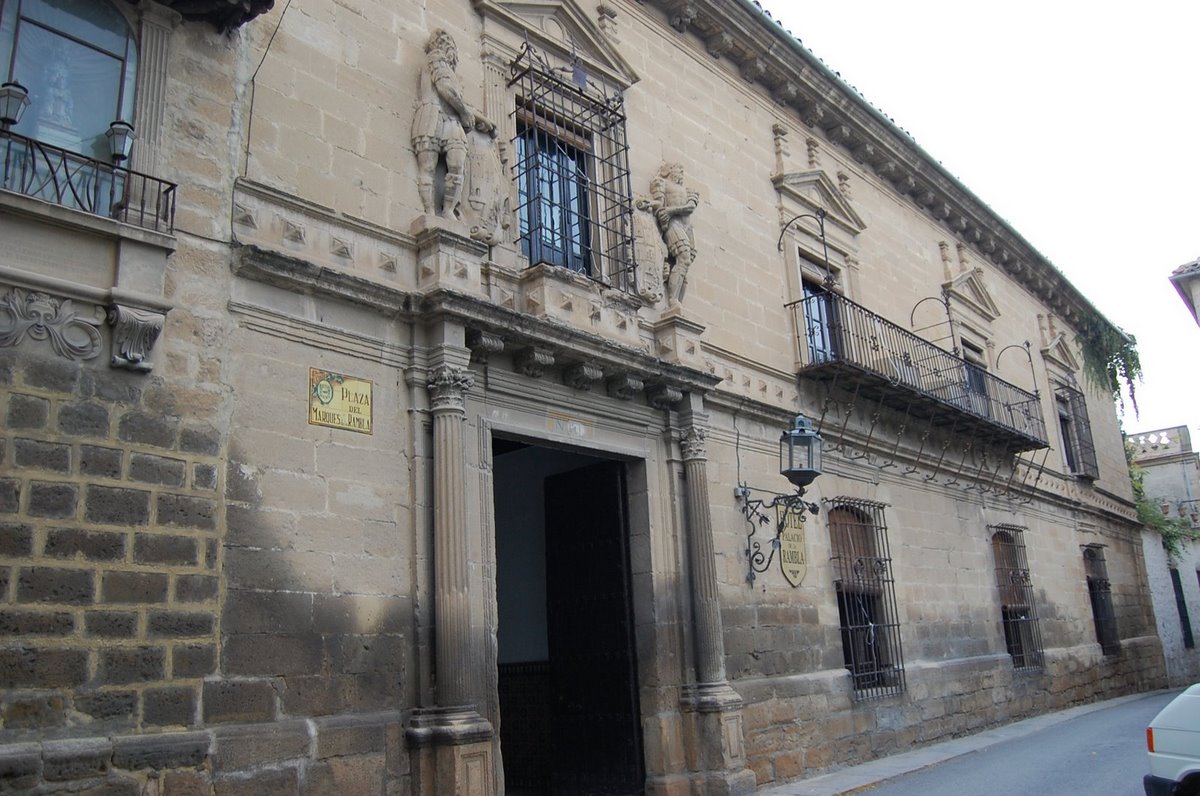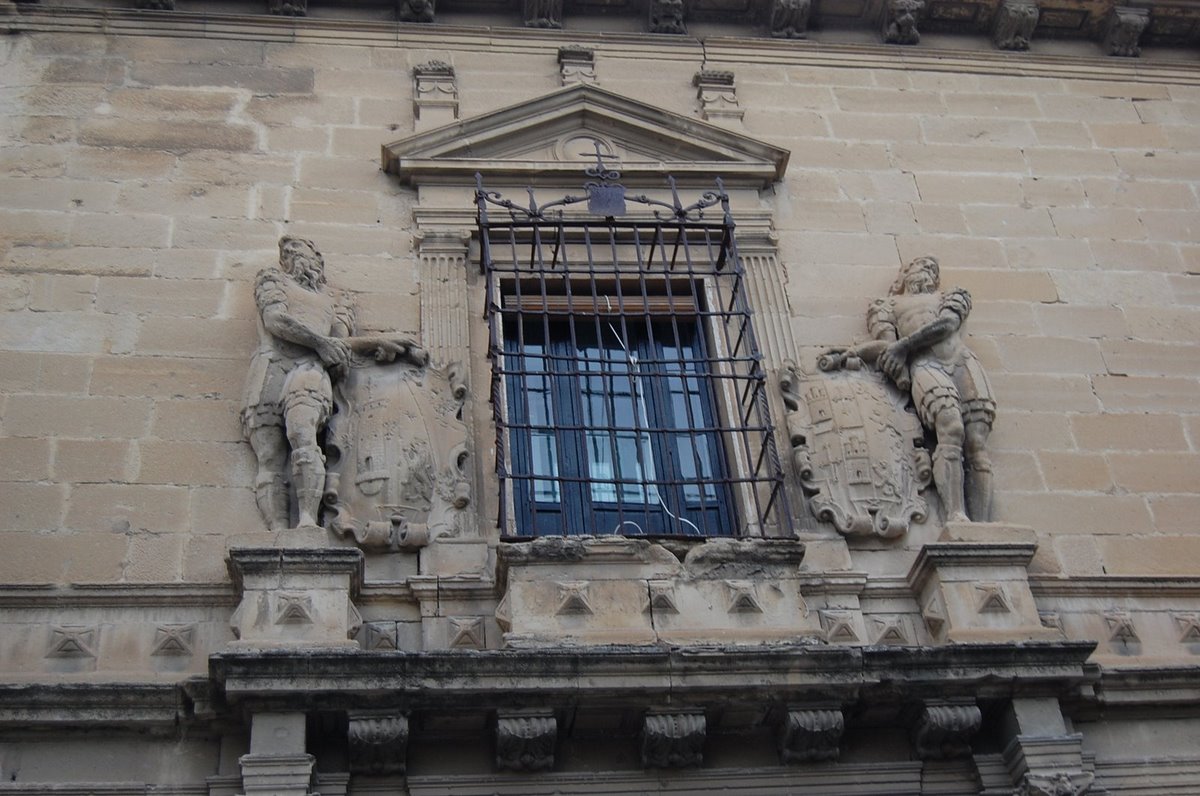Now let's take a walk west through
the heart of Úbeda. Let's start with a quiet
doorway whose historical significance is nearly smothered
by tree branches.
Enter the Renaissance here
The church of Gothic-Mudejar style
church of Santo Domingo rises above its elevated and
well-shaded courtyard. The tower we see here (below left) was added in
1702 by architect Francisco Caballero, much later than
the rest of this church. Remains of medieval churches
going back to the 13th and 14th centuries can be found
beneath Santo Domingo’s foundations.
Many churches in eastern Andalusia were named for this
saint who supposedly ransomed many captured Christians
from the Moors of Granada. Climbing the stairs, we found
Santo Domingo tucked into its own quiet pocket park that
nearly obscures some of its outstanding details -- Such
as this quiet door (below) through which Úbeda
walked into its Renaissance century.
The south door is from 1520-25, making it one of the
first Plateresque portals in then Gothic and Mudejar
Úbeda. How about those stacked columns? Note the
vegetable frieze at top -- there is very little religious
about this church door. The rest of the church has long
since gone over to the secular side as well, having been
used as a warehouse and is currently a workshop.
The picture above right shows a
detail of the rosettes that decorate these precisely cut
arch stones (called voussoirs). The cleric's hat
is that of Don Esteban Gabriel Merino, the bishop who
commissioned this doorway just as the Renaissance was
about to rebuild Úbeda in the 16th century.
Previous bishops were pretty staunch proponents of the
Gothic. The architect/mason was Diego de Alcaraz, a
local. (Andrés de Vandelvira, who was 11 years old
at the time, may have later mastered the Renaissance in
Úbeda, but Diego introduced it.) During the 5
years that this door is constructed, Francisco de los
Cobos will accompany the Emperor on their first trip to
Italy where Francisco will discover and bring back the
High Renaissance to his home town where this door has
already been added to a Gothic church. (Need some
historical context? About this time the pope is trying to
raise money to rebuild St. Peter’s in Rome by
selling indulgences and a young German priest named
Martin Luther is fussing with him about it.)
Enough of St. Peter’s in Rome; Let's now go to
Úbeda’s St. Peter's square, a mishmash of
buildings from the 13th through 19th centuries.
San Pedro Plaza
In the collage below, we see the
restoration of the palace of the counts of Guadiana.
Temporarily, it's a "see-through building." Like many
European restorations, the facade will be retained and a
modern building created within it. As a UNESCO world
heritage site since 2003, Úbeda requires its old
town facades to remain unchanged. Therefore this was (and
hopefully will return to being) an extraordinary
building. At right in the collage (thanks to Wikipedia)
we see an old picture of the palace: including caryatids
and, suggestive of Vandelvira’s Vela de los Cobos
palace, another set of stark white Doric columns on its
corners -- all capped by a large gallery.

Attached to the counts' palace is the simple church of
Saint Peter shown below. It's squarish shape suggests
that it may have been built over an Arab mosque.
Mostly Gothic, its Romanesque apse dates to the 2nd half
of the 13th century, shortly after the Christians took
back Úbeda. Its Plateresque doorway is obviously
much later. This facade was added in 1605 by Alonso
Barba, a follower of Vandelvira. Below right we see
a woman holding twins next to the Corinthian column. Set
amid Van Goghish swirls, she represents the virtue
Charity. (Faith is on the other side of the door holding
a cross and supposedly Hope was being reserved for
Obama.)
On either side of Saint Peter
(below), we have the crest of the bishop of Jaén
on whose watch this facade was added: Sancho
Dávila.
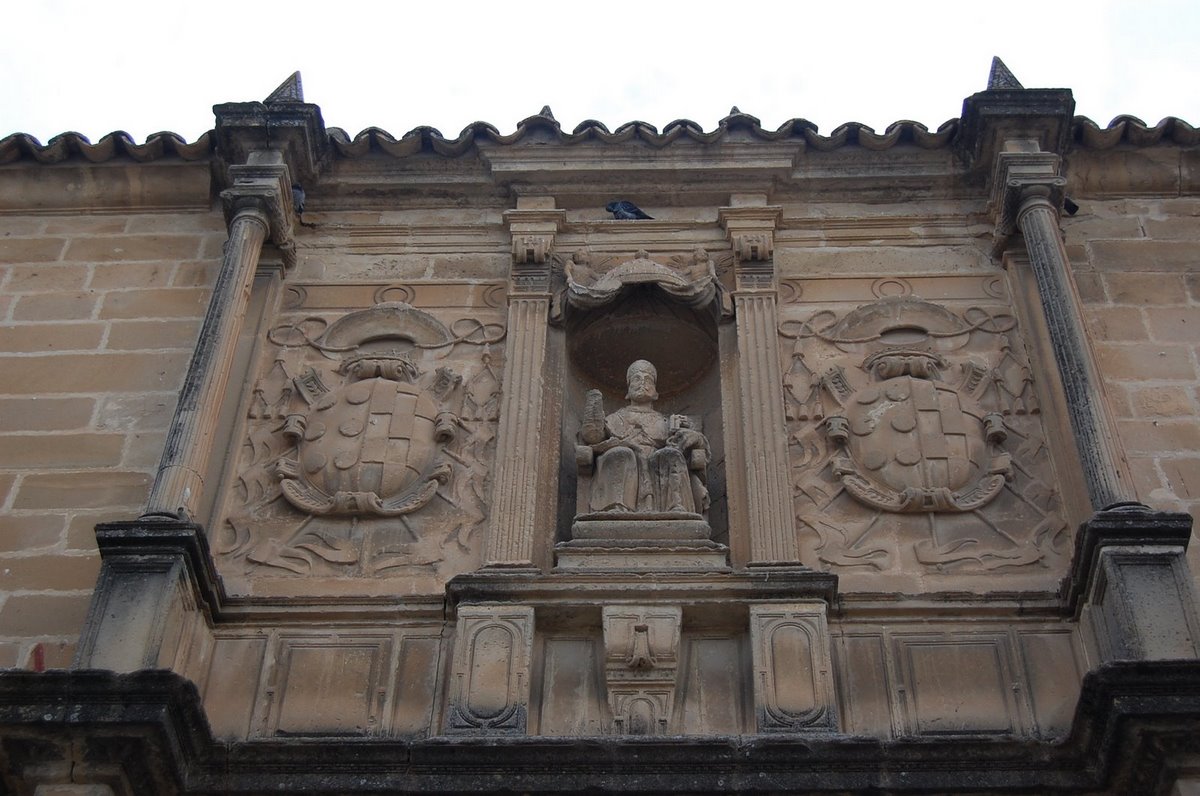
Los Orozco Palace
St. Peter's is a lovely square
with a bit of green. The entire south side is taken up by
the monolithic white wall of a Franciscan convent; but
the west side has the more recent (19th century) Los
Orozco Palace (below).

This is a French influenced building as seen by the bows
above the windows (as
seen in the picture below). Úbeda’s
most famous writer (after John of the Cross) is the
modern Spanish novelist Antonio Muñoz Molina who
set some of the scenes from his first novel in this
palace. (He now lives in New York City.)
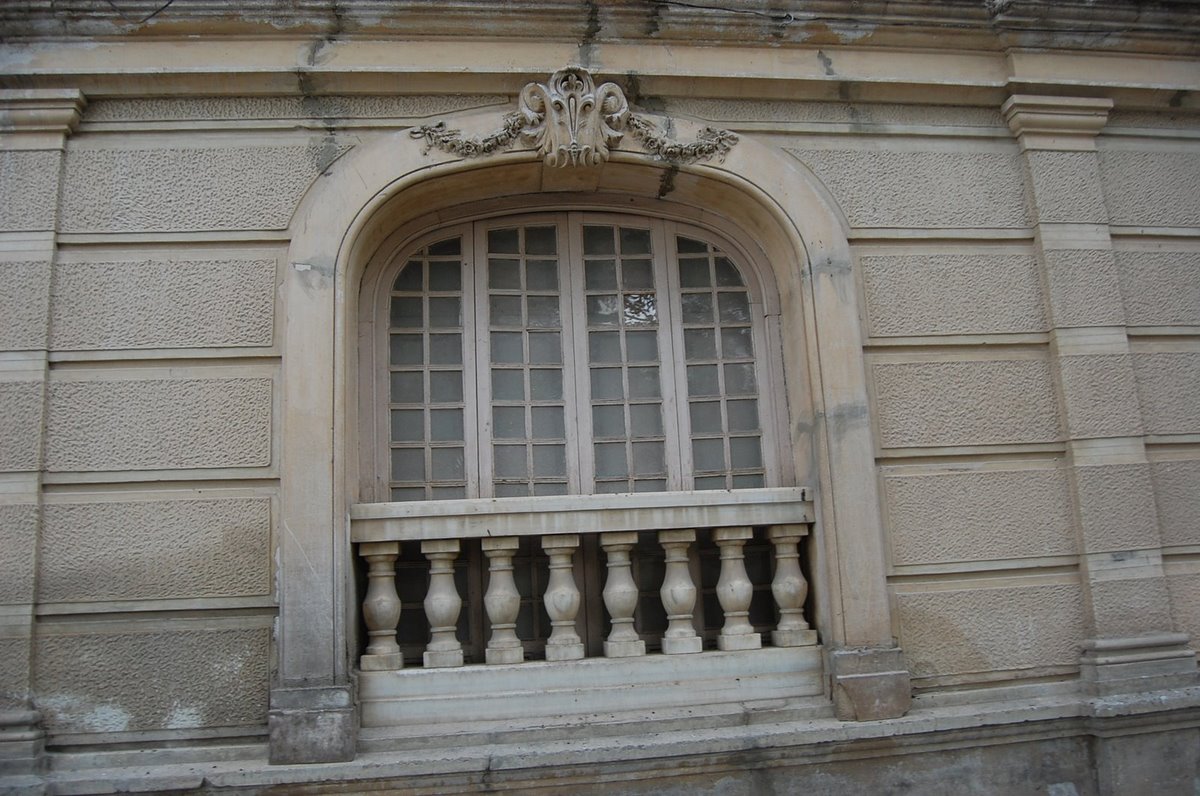
Palaces to hotels
A walk through the narrow streets
reveals many lovely Renaissance buildings now often used
as hotels as is the case here with the elegantly
burglar-barred Hotel Ordonez Sandoval shown below:
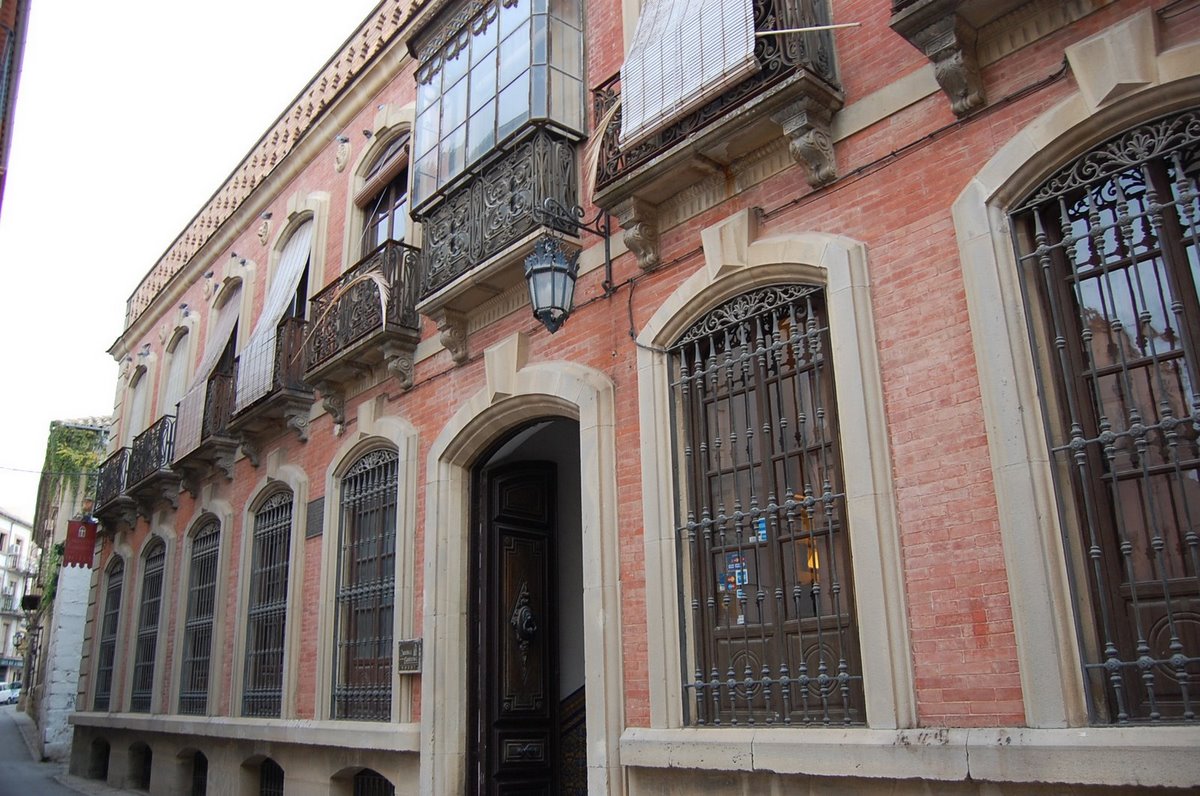
Below we have the 16th century Rambla Palace with its
classical facade including these gentlemen at right
leaning on similar coats-of-arms.
Let's venture next to a more modern square that seems to
move traffic from the old town into the newer areas: the
Plaza de Andalucía. Join us by clicking
here.
Please join us in the following slide show to
give Úbeda the viewing it deserves by clicking here.
|
|
|
|
Geek and Legal Stuff
Please allow JavaScript to enable word
definitions.
This page has been tested in Internet
Explorer 7.0 and Firefox 3.0.
Created on 15 February 2009
|
 |
TIP:
DoubleClick on any word to see its definition.
Warning: you may need to enable javascript or allow
blocked content (for this page only).
TIP:
Click on any picture to see it full size. PC
users, push F11 to see it even larger.
<
